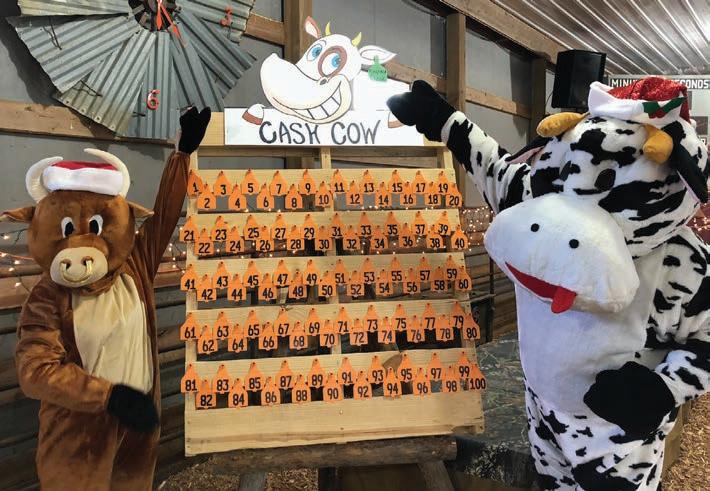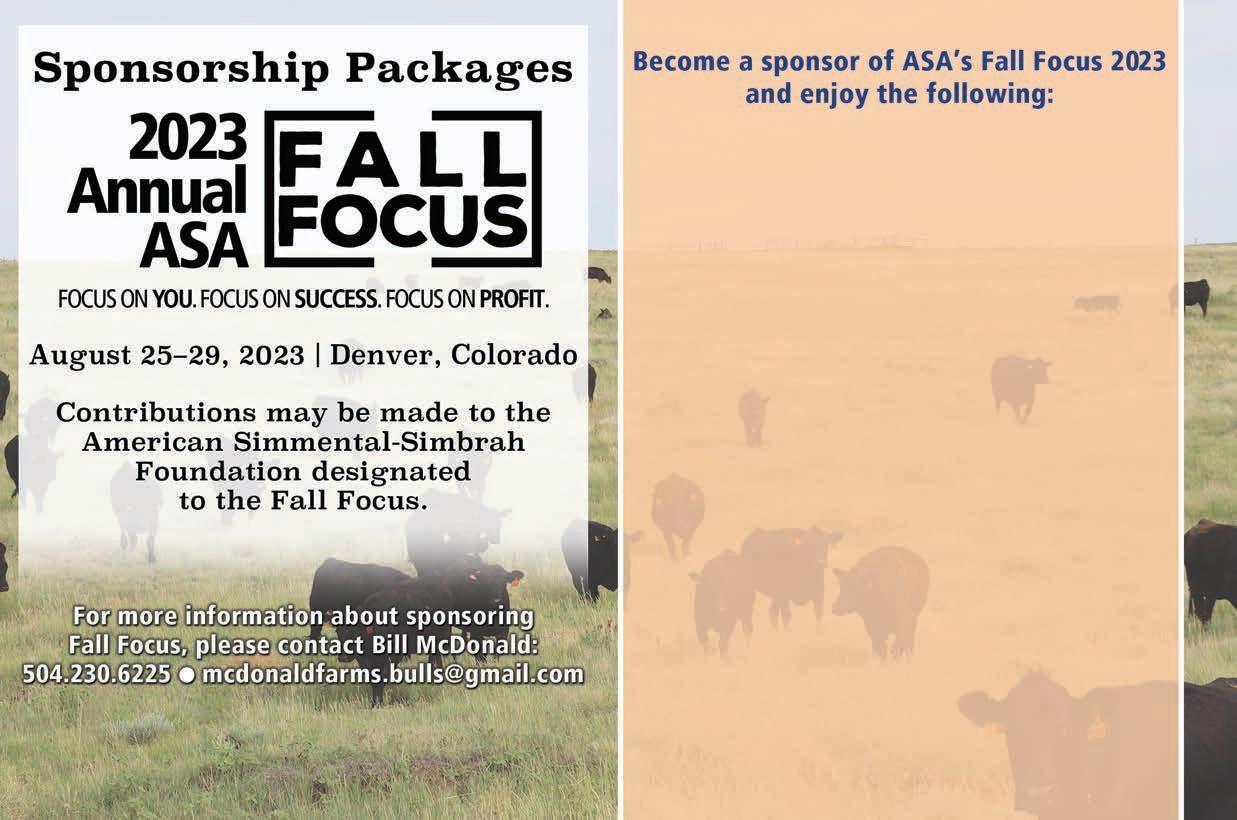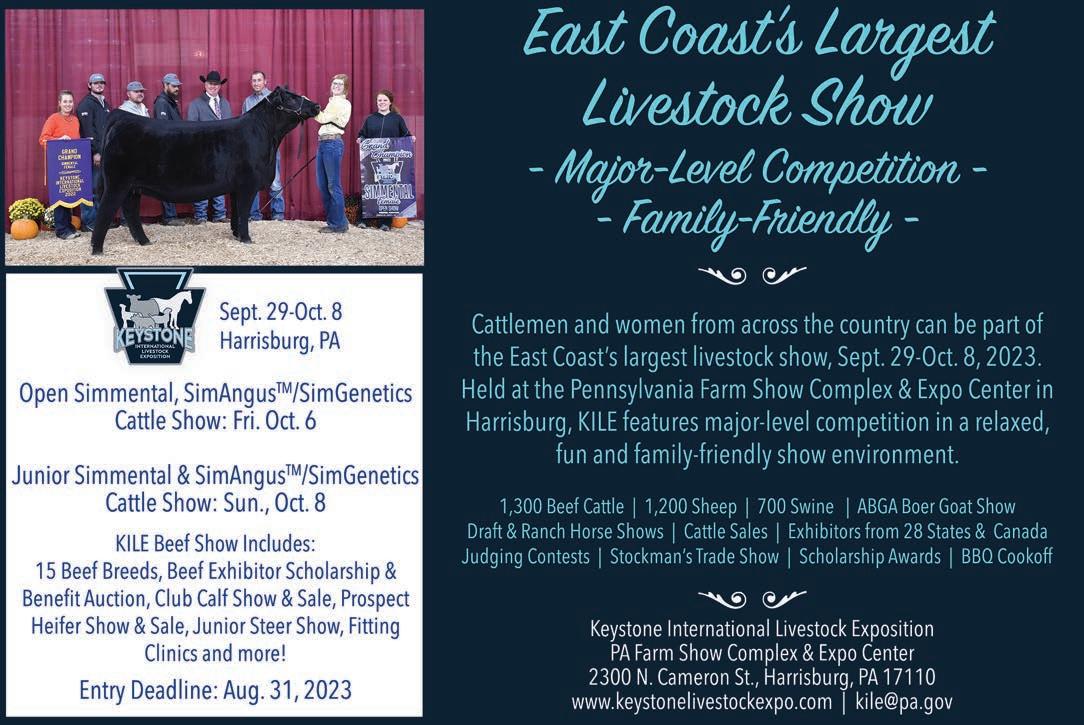
6 minute read
Developing leaders through friendship, networking, and communication skills!
by Hallie Hackett, South Central Region
With summer shows wrapping up, weather cooling down (at least in some parts of the nation), and fall shows soon to pick up, juniors might find themselves relaxing, even if just for a moment. Before we know it, we will all be right back into the thick of show season. For younger exhibitors, this time seems endless and shows seem plentiful.
continued to admire them into adulthood, and strive to be like them in my current endeavors. The further that I have gotten in my show career, the more I have realized the impact that I have on other people. Having juniors and parents come to me and share how I have impacted them has opened my eyes to the person that I have become.
As I’m sure most exhibitors have heard: “There is always someone in the barn watching you.” With a new year coming and many events to attend, all juniors should remember this quote. No matter your age, skill level, or experience, there are people who will see you, even when you don’t realize it. Not only does this count in the show ring, but throughout the barn and contest rooms. Time and time again, SimGenetics exhibitors have proven their ability to lead in and out of the show ring. With this being said, I challenge our juniors to uphold this standard, be the person you looked up to, and remember: somewhere in the barn, there is a kid that wants to be just like you. n
As for myself, I can remember all of my time as a young showman. I was always told to find an older person that I looked up to, and try to be like them. This bit of advice applied not only to showmanship skills, but in contests, leadership, and simple interactions. It wasn’t hard for me to find several individuals to admire. Those individuals, even unknowingly, have shaped the way that I have grown up, the showman I have become, and the leader I strive to be. As my role models and I have gotten older, I have www.juniorsimmental.org
Eastern Region
Luke Harker Hope, IN 812-371-7976 lukeharker2252@gmail.com
Walker Housley Dayton, TN 423-599-8346 walkerhousley@gmail.com
Matt Koverman Minford, OH 740-988-0203 koverman.18@osu.edu
Garrett Walther Centerville, IN 765-238-8584 gwalther55@gmail.com
North Central Region
Jazlynn Hilbrands Holloway, MN 320-297-1611 jmhilbrands@gmail.com
Martha Moenning Hayfield, MN 507-923-1114 marthamoenning@gmail.com
Emerson Tarr LeRoy, IL 309-205-0860 eleetarr2021@gmail.com
South Central Region
Rylee Abney Watonga, OK 405-446-7588 rabney914@icloud.com
Kaitlyn Cloud Carthage, MO 417-793-7824 kcloud2002@gmail.com
Hallie Hackett Texarkana, TX 903-556-6758 halliehack10101@gmail.com
Blake Henrichs Okarche, OK 405-831-1672 bhenrichscattleco@gmail.com
Western Region
Bella Beins Deweyville, UT 435-452-2391 bella.beins@gmail.com
Blake Fabrizius Carr, CO 970-556-9115 bwfabrizius@gmail.com
Jonna McCullough Fort Benton, MT 406-868-0253 mcculloughjonna1@gmail.com
Sydney Schwenk Boring, OR 503-847-6828 sydney.schwenk55@gmail.com
Romania, Paraguay Markets to Open
The USDA has reopened the doors allowing Romania to revive imports of pork products to the United States, while also considering approving plans by Paraguay to export its beef in US markets following high-level negotiations. USDA’s Food Safety and Inspection Service (FSIS) issued a notice in early May that will let Romania resume sending pork products to the US, 16 years after the Romanian government has voluntarily stopped such exports. Following an audit of Romania’s current inspection system for swine slaughter and further processing, FSIS determined that the nation’s processors maintain “an equivalent inspection system,” opening the door for resumption of those exports on products, which were produced after May 2, FSIS reported in a recent news release.
Meanwhile, USDA indicated that Paraguay is moving in the right direction toward becoming eligible to export its beef products to the United States after talks with Paraguay’s Agriculture and Livestock Minister’s office. Daniel Whitley, USDA’s administrator of Foreign Agricultural Service (FAS), said that “beef from Paraguay is safe and inspection protocols currently meet all USDA standards. That should move the process along for approval after the standard comment period and review.”
World Food Prices Drop, but Meat Costs Increase
The benchmark index of international food commodity prices declined in May — averaging 124.3 points, down 2.6% from April and as much as 22.1% below the all-time high reached in March 2022 — amid significant drops in quotations for most cereals, vegetable oils, and dairy products, the Food and Agriculture Organization of the United Nations (FAO) reported.
However, the FAO Meat Price Index rose in May by 1.0%, averaging 117.9 points, driven primarily by a steady high Asian import demand for poultry meat and persistent supply tightness for beef in the US. Those levels still were 4.1% below those seen for May 2022, the agency said.
Concerns over potential short-term poultry supply challenges, due to widespread avian flu outbreaks, persist, the report said. Meanwhile, beef saw higher global demand for Brazilian supplies, despite the continued high cattle slaughter in Australia.
Pork prices rose for the fourth successive month, although only marginally, as supply limitations stemming from high production costs and animal diseases elsewhere boosted demand for Brazilian supplies. The index tracking sugar prices globally also rose in May.
UK Considers Fast Approval for Cultivated Meat
The UK’s Food Standards Agency last week released a statement indicating that it is exploring the possibility of fast-tracking regulatory systems for cultivated meat.
In the statement, the governing body noted it is being led by a study it commissioned from international accounting firm Deloitte. The report found the move could help the UK meet its carbon reduction targets.
One option in the report suggests taking a “collaborative regulation” approach, which would allow alt-proteins to be sold in the UK without a prolonged novel foods assessment if the products have already been lawfully approved and sold in other parts of the world.
The agency was quick to point out that this report isn’t necessarily illustrative of the policies it ultimately develops. “This report will be used as an input to support thinking within the FSA about how we design a future regulatory model,” the FSA statement said.
The current regulatory approval process for novel foods takes an average of 35 months, and the British Institute of Economic Affairs in February released a statement urging the FSA to update the 25-year-old process.
“The EU’s novel food regulations — which have been retained in UK law post-Brexit — have delayed the kind of innovation we need to tackle the challenges associated with industrial farming,” the non-profit wrote.
R-CALF Urges USDA to Ditch
Paraguayan Beef Import Proposal
Independent cattle group R-CALF USA is urging the USDA to withdraw its recently announced proposal to allow importation of beef from Paraguay.
In comments submitted to USDA’s Animal and Plant Health Inspection Service (APHIS), R-CALF says the proposal should be withdrawn because it poses a risk of introducing foot-and-mouth (FMD) disease into the United States.
The group also noted that the APHIS risk analysis on which the proposal is based relies on data and an on-site visit conducted ten years ago.
The National Cattlemen’s Beef Association expressed similar points of contention when USDA announced the proposal.
R-CALF argues further that APHIS’ risk evaluation methodology cannot accurately assess the risk for FMD outbreaks in countries with histories of FMD.
“Several times since 1997, APHIS had underestimated the risk for the reemergence of the disease in countries that are not free of FMD,” said R-CALF USA CEO Bill Bullard. “For example, the agency was dead wrong about the risks in Uruguay, Argentina, South Africa, South Korea, and Japan.”
An APHIS spokesman said, “We are aware we received adverse comments and are evaluating all comments received as we determine appropriate next steps.”
Australian Beef Exports to US See Significant Jump
Australian beef exports to the United States experienced a significant surge in May, marking a turnaround after a period of subdued trade, according to Meat & Livestock Australia.
The exports to the US reached a record monthly tally of 19,786.5 tons, a substantial 44% increase compared to April and the highest figure in the past year. The boost in exports comes as the US deals with reduced domestic production due to droughtdriven herd reduction.
This surge in Australian beef shipments to the US, along with solid growth in other export markets, reflects the positive momentum and increased supply in Australia’s beef industry.
Australia was fifth in beef exports to the US behind Canada, Brazil, Mexico, and New Zealand in Q1 2023.
Shipments to all export markets reached 100,838.3 tons, marking a 27% increase from April. China emerged as Australia’s largest volume market for the second consecutive month.
Other markets, including South Korea, Indonesia, and the Middle East, also recorded growth in Australian beef imports. However, the trade with the United Kingdom remained minimal ahead of the new Free Trade Agreement, which came into effect on June 1, eliminating tariffs on future exports. n









